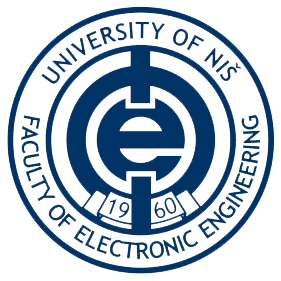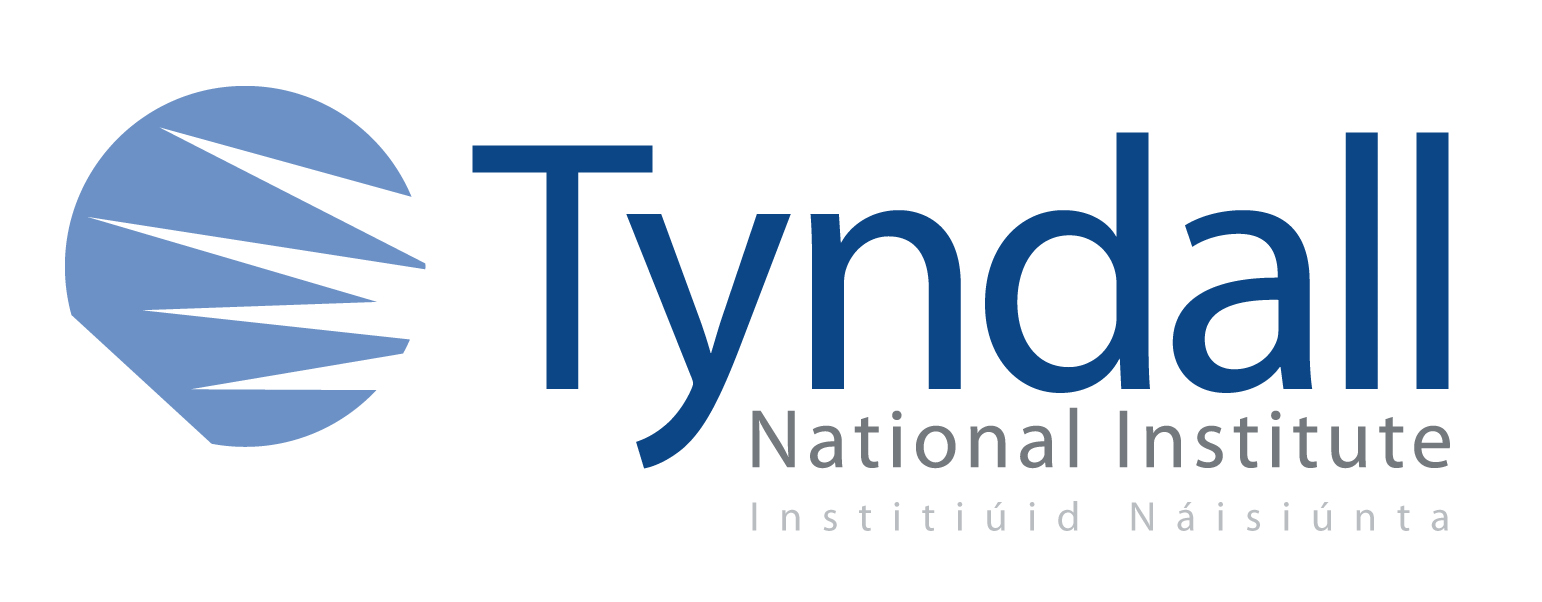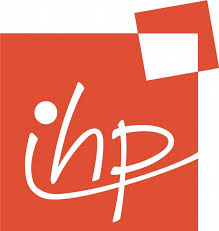Faculty of Electronic Engineering, University of Niš (EF-UNINIS)
Participant full name: Faculty of Electronic Engineering, University of Niš
Participant short name: EF-UNINIS
Country: Serbia
Participant number: 1
Short description of the organisation:
Faculty of Electronic Engineering, University of Nis (EF-UNINIS) operates as one of 13 faculties of the University of Nis, and is one of the top 3 technical science faculties in Serbia. It has more than 100 scientific staff and over 1500 students.
EF-UNINIS team is actively engaged in the research of ionizing radiation effects in semiconductor devices. The main subjects investigated by the EF-UNINIS radiation research team include: characterization of radiation dosimeters, study of MOS transistors reliability (the radiation and post-irradiation effects, as well as the electrical and post-electrical stress effects), investigation of the electrical discharge and recombination processes in the afterglow periods in gases, and medical X-ray imaging. In relation to the radiation dosimetry research, EF-UNINIS has been involved in characterization of the radiation-induced response and post-irradiation response of RADFETs irradiated with gamma radiation. Also, extensive research has been done on characterization of the dosimetric properties of commercial semiconductor components (PIN photodiodes, phototransistors and SiC Schottky diodes). EF-UNINIS has also experience in characterization of custom designed radiation detectors using transient current techniques (top-TCT and edge-TCT techniques), and in characterization of single event effect through the circuit-level (SPICE) simulations. The researchers from EF-UNINIS have published over 200 papers in peer-reviewed journals and conference proceedings. Besides investigation of physical and electrical effects of ionizing radiation, the EF-UNINIS team has substantial experience in the design and development of readout systems (PCB and system design, microcontroller programming, design of data acquisition unit) for experimental investigation of radiation effects.
Resources:
- Semiconductor characterization system Keithley 4200-SCS
- Source-measuring units Keithley 2636A, Keithley 2400 and Keithley 2410
- High voltage sources Keithley 237 and Keithley 248
- Signal generators Keithley 339 and HP 8116A,
- Digital oscilloscopes DPO 4032, DPO 5104 and TDS 2022B,
- Spectrometer AvaSpec-3648 Avantes
- Low current switching matrix Keithley 708A
- Aaronia Spectran kit for LF and RF frequency measurements
- DIP components test fixture LR8028
- Geiger Mueller radiation dosimeter Inspector
- Mikroelektronika hardware and software development tools for PIC and dsPIC microcontroller-based applications.
- Heating furnace Heraeus HEP 2
- Laboratory tube furnace Lenton LTF 16/15/180
- Particulars transient current technique (TCT) characterization system
- Two PC-compatible RADFET reader systems
- Agilent 4284 LCR meter
- Curve tracer Tektronix 577
- Photomultiplier tube Hammamatsu H7155-21
- DC power supply Keithley 2200-72-1, Agilent 6645A and Mastech HY3005D
- Semiconductor parameter analyzer Agilent 4156C
- Altium NanoBoard3000 for FPGA programming
- Digital multimeter Agilent 34410A
- Setup for design and manufacturing of single and dual layer printed circuit boards.
Tyndall National Institute (TYN)
Participant full name: Tyndall National Institute, University College Cork
Participant short name: TYN
Country: Ireland
Participant number: 2
Short description of the organisation:
Established with a mission to support industry and academia in driving research to market, Tyndall National Institute is one of Europe’s leading research centres in Information and Communications Technology (ICT) research and development and the largest research facility of its type in Ireland. As a successor to the National Microelectronics Research Centre (NMRC founded in 1982) at University College Cork, the Institute hosts over 460 researchers, engineers and support staff, including a full-time postgraduate cohort of 135 students, generating over 200 peer-reviewed publications each year.
With a network of over 200 industry partners and customers worldwide, Tyndall generates around 30M income each year, 85% from competitively won contracts nationally and internationally. Tyndall is also a lead partner in European research programmes in its core areas of ICT, communications, energy, health and the environment worth 48M, including 10M accruing to Irish partners (from Framework 7). Hosting the only full CMOS, Micro-Electronic-Mechanical Systems (MEMS) and III-V Wafer Semiconductor fabrication facilities and services in Ireland, Tyndall is capable of prototyping new product opportunities for its target industries - electronics, medical devices, energy and communications. Tyndall is a globally leading Institute in its four core research areas of Photonics, Microsystems, Micro/Nanoelectronics and Theory Modelling & Design. Tyndall is the lead institution for the Science Foundation Ireland funded Irish Photonics Integration Centre (IPIC).
Resources:
Tyndall owns a silicon fabrication facility for manufacturing radiation dosimeters. The Silicon Fabrication Area is configured as a CMOS facility but a key strength of the Tyndall silicon fabrication facility is the flexibility allowed in processing. The laboratory offers the ability to introduce new materials, structures or devices in a CMOS environment with the possibility of transferring successful research output to commercial foundries. The silicon clean-room is currently operating on 100 mm substrates, but all recent equipment acquisitions can be upgraded to 150 or 200 mm capability. Besides, Tyndall owns a laboratory for dosimetry characterization. The laboratory has an area of 200 m2 and provides all the necessary equipment for RADFET and diode I-V characterization. The equipment includes two fully configured Cascade AttoGard semi-automated probe stations for wafer measurements (include thermal cucks and controllers), two manual probe stations, three semiconductor parameter analyzers (two Agilent 1500 and one Keithley 4200-SCS), half a dozen of Keithley 2400/2600 family SourceMeters, and standard laboratory equipment (voltmeters, multimeters, oscilloscopes, power supply sources, etc.)
IHP GmbH (IHP)
Participant full name: IHP GmbH - Institute for High Performance Microelectronics
Participant short name: IHP
Country: Germany
Participant number: 3
Short description of the organisation:
IHP GmbH has a team of 300 R&D professionals with core competence in microelectronics: process technology, circuit design, and systems. As a member institute of the Gottfried Wilhelm Leibniz Society, the core funding comes from the German Federal Government and the State Government of Brandenburg. The institute is focused on developing innovative solutions for wireless communication, particularly in the 5-120 GHz range. Its expertise ranges from system prototyping and circuit design to the implementation and optimization of protocol stacks and the development of system-enabling CMOS-compatible technology modules. The IHP is focused on wireless communication with an emphasis on integrated solutions, building on European strengths to enhance leadership in rapidly growing areas. Within the Systems Department, the Design-for-Testability group is engaged in the design and development of radiation hardened integrated circuits in 130 nm and 250 nm CMOS and BiCMOS processes, as well as development of radiation tolerant design flow and methods for testing the radiation tolerance of custom designed integrated circuits. Major achievements in the field of rad-hard design are development of the complex Middleware Switch ASIC (0.25 um CMOS) and development of innovative selective fault tolerant methodology. Furthermore, we are now developing solutions for circuit-level characterization of single event effects, fault tolerant flexible multi-core architectures, error detection and correction in non-volatile memories, implementation of very high speed serial interfaces. This work is enabled by existing IHP's rad-hard library for 250 nm process with ongoing evaluation of the project for radiation hard applications. The similar process has been started also for IHP's 130 nm technology.
Resources:
During the development process of an integrated circuit IHP uses different CAD tools within own design flow. For complete ASIC design and verification purposes are used Cadence, Synopsys and Mentor Graphics licensed tools. In addition, depending on the project needs, for verification is possible to use the Cadence Palladium emulator. Team of experienced digital designers offers the possibility for design of complex systems. In order to verify the project results we use the test facilities (high-end Advantest 93000 tester) for packaged and on-wafer tests and measurements. In addition, other equipment is available such as oscilloscopes, real-time spectrum analyzer RSA61114A supporting frequencies up to 14 GHz from Tektronix, etc. IHP utilizes the proprietary rad-hard cell architectures and rad-hard design flow. IHP has one of the most modern infrastructures in Europe, including a clean-room with 0.25um and recent 0.13um high-speed BiCMOS technology.
University of Granada (UGR)
Participant full name: University of Granada
Participant short name: UGR
Country: Spain
Participant number: 4
Short description of the organisation:
Universidad de Granada is a Spanish High Education Institution, founded in 1531. Over 60,000 undergraduate and postgraduate students study at the UGR, with another 20,000 students taking additional courses, language courses, summer courses, etc. Our University is in the 33 position in the World Shanghai Ranking 2017 in the field of Engineering (ICT). The research group at the University of Granada was founded in 2000 by researchers from the Department of Atomic, Molecular and Nuclear Physics, the Department of Electronics and Computer Technology and the Medical Physics Service of the University Hospital “San Cecilio” of the University of Granada. This group is co-leaded by Prof. Lallena (Physics) and Prof. Palma (Electronics). Our goal is the numerical simulation, design, development and fabrication of sensors and low-cost and portable instrumentation for environmental, health, food
Resources:
The research team from the University of Granada is a multidisciplinary group including physicists, Electronic engineers and Telecommunication Engineers with several laboratories and facilities. The following are the major resources:
- Laboratory for electrical and electronic characterization up to 8 GHz
- Laboratory for optical characterization of sensors
- Laboratory for material and semiconductor characterization
- Measurement equipment for radiation absorption and imaging techniques
- Equipment for inkjet printing and silk screen printing of electronics and sensors
- Measurement equipment for luminescence
- Measurement equipment for radiated EM fields
- Climatic chamber
- Equipment for multilayer PCB prototyping
- Laboratory of basic nuclear physics and quantum physics
- Computing cluster with 120 cores
- Ion traps and lasers laboratory including a 7-T superconducting solenoid
- Two-stage cold head system providing temperatures of 4 K @ 1 W
- 1 linear accelerator Siemens Artiste in clinical use (2 modes of photons and 6 of electrons).
- 1 X-ray irradiation cabinet with energies between 60 and 200 keV.
- Several X-ray units for diagnostic use: TCs, equipment for mammography, conventional equipment, etc. with the following available technologies:
- Integration of sensors in optoelectronics components.
- Printing and deposition technologies for sensors on polymeric matrices.
- Electrical and thermal characterization of semiconductor devices.
- Measurement of ionizing radiation.
- Development of mixed analog-digital portable electronic instrumentation platforms for signal processing of mono- and multi-analyze sensors.
- Development of measurement algorithms for dynamically reconfigurable platforms (MCU, FPGA and FPAA).
- Smart sensor processing through dynamic reconfiguration.
- Design and fabrication for connectivity and sensor networks.
- Development of software for computer-controlled instrumentation.
- Calibration and validation of prototypes.
- Radiation detectors (Geiger-Mueller counter, proportional counter, scintillation detector, solid state detector, etc.)
- Characterization of electronics devices at cryogenic temperatures
- Acquisition systems for atomic and nuclear physics experiments
- Measurements at very low pressures: <10-10 mbar





